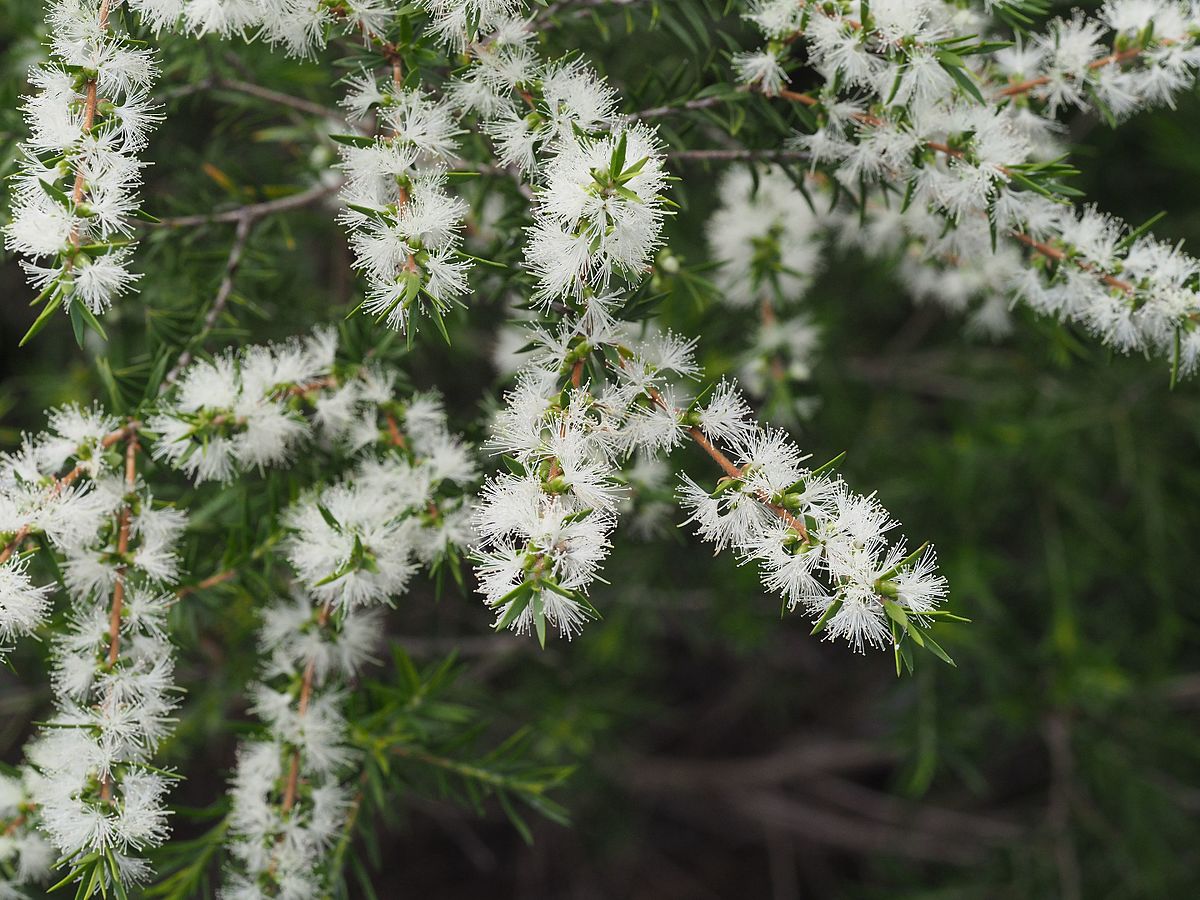River Teatree
(Melaleuca bracteata)

Description
Melaleuca bracteata, commonly known as the black tea-tree, river tea-tree or mock olive is a plant in the myrtle family, Myrtaceae and is endemic to northern Australia. It usually occurs as a large shrub but under ideal conditions can grow into a tree up to 10 m (30 ft) tall. It is an adaptable species in cultivation and a number of cultivars have been developed. Melaleuca bracteata is a bushy-foliaged, small to medium tree, normally 5–8 m (20–30 ft) tall but occasionally taller and it usually flowers and sets seed by the time it is 5–8 m (20–30 ft) tall. Its bark is rough and dark grey in colour. The leaves are narrow, lance-shaped to linear, 8–28 mm (0.3–1 in) long by 1–3 mm (0.04–0.1 in) wide with no stalk, or a very short stalk. The leaves are spirally arranged around the stem and crowded together. The upper surface of the leaf is hairy, especially when young, with many oil-dots. The black tea-tree flowers profusely. Flowers are loosely arranged in clusters to form cylindrical or ovoid spikes, 30–90 mm (1–4 in) long by about 15 mm (0.6 in) across, coloured cream or white. Each flower usually has a leaf at its base and the petals are shed soon after the flower opens. Flowering occurs from spring to early summer and is followed by fruit which are more or less spherical to oval or barrel-shaped, about 3 mm (0.1 in) in diameter, sparsely arranged along the branches.
Taxonomic tree:







